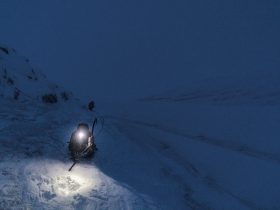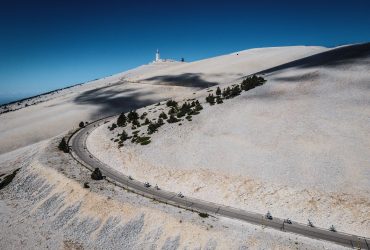Discovered by man in 1819, Antarctica has always been the most hostile of continents. However, a handful of adventurers have had the ambition to cross it.
On February 19, 1819, the ship of the English captain William Smith approaches Antarctica. It was the first time that man had gone beyond the 62nd degree. The land Smith observed that day was indeed the Antarctic continent. It will take almost 100 years to finally reach the South Pole. It was the Norwegian Roald Amundsen who was the first to plant his country's flag there on 14 December 1911, stealing victory from the British. Since then, it is the complete crossing of the Antarctic that fascinates man. There are about twenty of them who have succeeded in doing so. A look back at these extraordinary feats.
The first scientific crossing.
On March 2, 1958, after covering 3,360 kilometers in 98 days, explorer Vivian Fuchs and his team completed the first overland crossing of Antarctica from the Weddell Sea to Scott Base on the Ross Mother. While this is a sporting feat, it also has a scientific objective. Fuchs's team wanted to measure the thickness of the polar ice to determine the structure of the Antarctic. It was at this time that coal was discovered in the Theron Mountains on the South American side of the South Pole. The expedition also included Sir Edmund Hillary, the first man to reach the summit of Mount Everest. After Everest and the North Pole, Hillary also went to the North Pole, making him the first person to reach both poles and the summit of Everest.
Colin O'Brady's controversial feat
In 2018, American Colin O'Brady crossed Antarctica on foot, solo and unassisted, in just 54 days. But the feat (the fastest crossing ever) was quickly put into perspective by some observers. In particular, he was criticized for starting his crossing 700 km inland, in contrast to classic crossings which start close to the sea (but are more expensive). O'Brady also used the Antarctic Highway for the entire return journey from the South Pole. This is a road used by supply trucks. It is smooth and has flags to avoid getting lost.
Stéphanie and Jérémy Gicquel, 2 045 km via the South Pole
Three years ago, French couple Stephanie and Jeremy Gicquel crossed Antarctica on foot in 74 days, covering 2,045 km. This distance allowed Stéphanie to enter her name in the Guinness World Records for the longest expedition by a woman in Antarctica. It was after running a marathon around the North Pole It was at -30°C that this ultra trail enthusiast decided to embark on this adventure. To achieve this, this lawyer by profession had to ski for eight hours a day, face temperatures of -30°C (-50°C in the worst case) and a wind blowing continuously at 80km/h. In 2019, Stéphanie Gicquel achieved another feat, finishing six marathons in seven days on six different continents.
Mike Horn and Boerge Ousland's scare on the... Arctic
While Antarctica has always fascinated, crossing the Arctic is a rarer proposition, due to the thinness of the ice. The last Arctic crossing to date caused quite a stir in 2019. Explorers Mike Horn and Boerge Ousland set out to cross the Arctic Ocean on skis, having first reached the Sea of Ice by boat. After disembarking from the boat, they set off on a ski assault across the Arctic, pulling sledges laden with supplies. After passing the North Pole on October 27 (15 days after their departure), their food resources were too quickly exhausted and the thin ice caused them to drift further than expected, complicating their adventure and forcing two members of the boat's crew to join them. The expedition ended with four of them joining the boat on the other side of the Arctic. "They've lost all their fat, they've got no muscle left. They've really run out of energy," concluded the explorer's daughter. The expedition, which was supposed to last two months, ended up taking 87 days...










